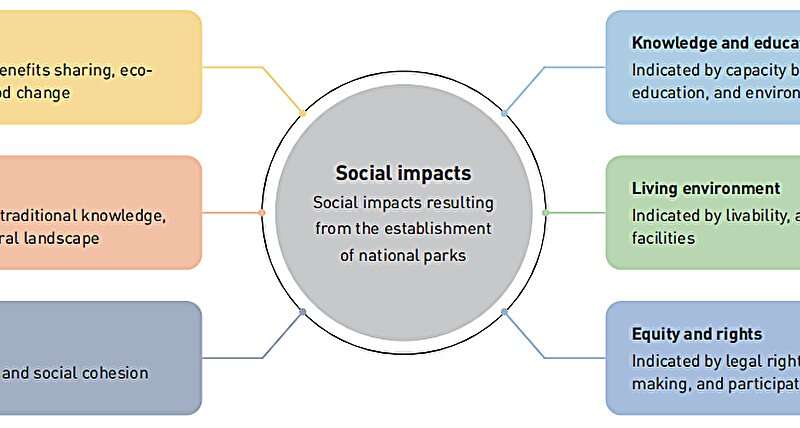Social impact assessment of the Giant Panda National Park in China: A comparative analysis

Social impact assessment is a practical requirement for the construction of the national park system, but there is still a lack of comprehensive conceptual frameworks, theoretical explanations, and systematic evaluations. Considering the distinctive characteristics of China's national park system construction, this study improves the existing framework and indicator system for social impact assessment.
It conducts a comparative analysis of three typical communities—the inside community, gateway community, and fringe community—surrounding the Giant Panda National Park (Tangjiahe area).
Through questionnaire surveys, semi-structured interviews, factor analysis, and One-way ANOVA analysis, we find that the comprehensive perception value of social impacts by the Giant Panda National Park was relatively negative. Respondents' perception values ranked from high to low were social relations, local culture, equity and rights, economy and livelihoods, and knowledge and education.
Moreover, except for the dimension of economy and livelihoods, there were significant differences in the perception of impacts by the three types of communities. Specifically, the gateway community has the most positive perception of social relations, local culture, and equity and rights; the inside community has the most positive perception of knowledge and education, while the fringe community perceives the most negative impacts in all four dimensions.

Furthermore, the primary causes of social impact perception are conservation policies, economic development, and location and transportation. This study suggests that non-economic social impacts should be given more attention, such as equity and rights, and knowledge and education.
Also, to ensure that the fringe communities can benefit from the construction and development of national parks, more attention and support from the governments and management agencies are necessary. This study can provide theoretical insights and case-based evidence for improving social impact discussions in protected areas.
The work titled "Social Impact Assessment of the Giant Panda National Park in China: A Comparative Analysis of the Inside, Gateway, and Fringe Communities" was published in the journal of Landscape Architecture Frontiers.
More information:
Yuqi Zhang et al, Social Impact Assessment of the Giant Panda National Park in China: A Comparative Analysis of the Inside, Gateway, and Fringe Communities, Landscape Architecture Frontiers (2023). DOI: 10.15302/J-LAF-1-020078
Provided by Higher Education Press